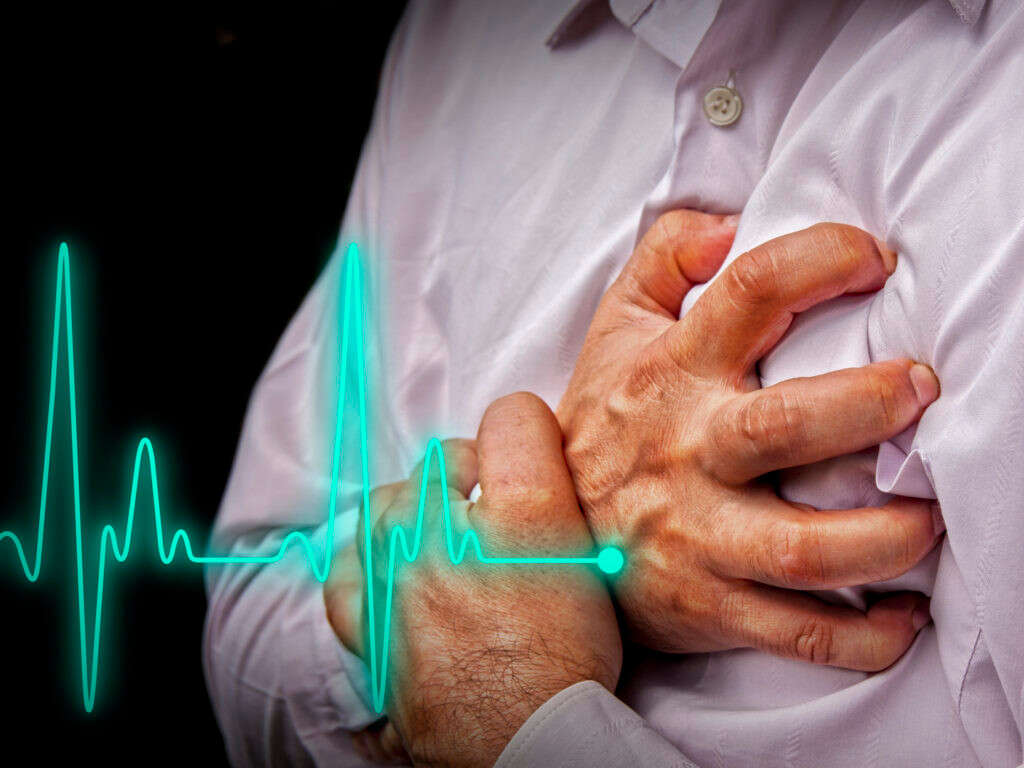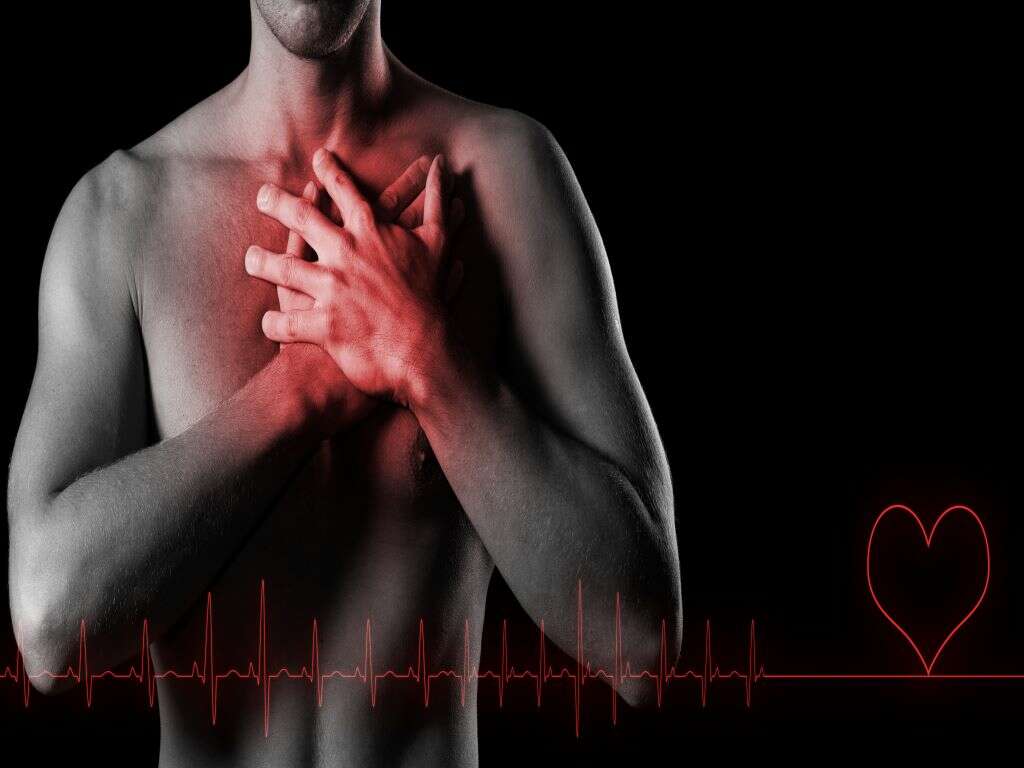10 Myocarditis Symptoms
Myocarditis is a condition where there is inflammation of the heart muscle. It is also known as inflammatory cardiomyopathy. Symptoms of the condition can last from several hours to months. Myocarditis can also cause heart failure due to cardiac arrest or dilated cardiomyopathy. It is most commonly caused by a viral infection. Other causes are side effects of medications, autoimmune disorders, toxins, bacterial infections and more. The condition can be diagnosed with the help of an electrocardiogram, magnetic resonance imaging (MRI) of the heart, troponin levels, ultrasound, and in some cases, biopsy of the heart.
The treatment for myocarditis depends on the underlying cause and severity of the condition. It may involve the use of medications such as diuretics, angiotensin converting enzyme (ACE) inhibitors, beta blockers, corticosteroids, or intravenous immunoglobulin. Patients are usually advised to take it slow and avoid strenuous activities while recovering. An implantable cardiac defibrillator may be recommended for severe cases. In 2013, it was estimated that there were 1.5 million cases where the majority of cases are mild. It is observed to occur more among males and those of younger age. However, it can develop in any individual regardless of age or gender.
Symptom #1: Chest Pain
Chest pain refers to pain that is felt anywhere in the region of the chest. It can be a symptom of serious disorders that is considered a medical emergency. Chest pain can be divided into heart and non-heart causes. Some of the non-cardiac causes of chest pain are musculoskeletal, gastrointestinal, or lung issues.
The underlying cause of chest pain can be determined through the patient’s medical history, physical examination, and tests. The chest pain in myocarditis is often described to be stabbing in character.
Symptom #2: Palpitations
Palpitations describe the patient’s perception of the abnormality of the heartbeat where it may be abnormally fast, hard, or irregular. It is commonly associated with anxiety.
Other causes include hyperthyroidism, coronary heart disease, emphysema, asthma, kidney disease, side effect of medication, alcohol, caffeine, electrolyte deficiency, or nutritional deficiency.

Symptom #3: Malaise
Malaise is a sensation where there is discomfort and uneasiness. It is usually one of the first indications that there is a disease or infection. It is a very common and non-specific symptom that can be seen in even the slightest ailment such as hunger, stressful situations, cancer, heart attack, stroke, and more.
Patients often express their symptom as a feeling that “something is not right”. It can be challenging for medical professionals to determine the underlying cause. It is thought to be due to pro-inflammatory cytokines or activation of an immune response.
Symptom #4: Poor Appetite
Poor appetite or loss of appetite is known as anorexia. In infection, it is thought to be part of an acute phase reaction triggered by peptidoglycans and lipopolysaccharides from bacterial DNA, bacterial cell walls, viral glycoproteins, and viral RNA that triggers the production and release of proinflammatory cytokines.
There are many diseases and conditions that can cause poor appetite such as acute viral hepatitis, anxiety, cancer, chronic kidney disease, dehydration, dementia, hypothyroidism, mood disorders, fever, tuberculosis, and more. Poor appetite can lead to weight loss.

Symptom #5: Fever and Chills
Fever is a febrile response. It occurs when the set point in the body’s temperature increases beyond the normal range. This causes the muscles to contract and a feeling of being cold. The cold feeling is known as chills. The body will then continue to produce and conserve heat. In young children, a fever can lead to febrile seizures.
A fever can be caused by various conditions such as viral, bacterial, and parasitic infections, appendicitis, vasculitis, side effect of medication, cancer, and more. Temperatures can be decreased with the use of antipyretics such as paracetamol (acetaminophen) and non-steroidal anti-inflammatory drugs (NSAIDs).
Symptom #6: Increased Effort to Breathe
Patients affected by myocarditis can often complain of having respiratory symptoms such as breathlessness and requiring extra effort to breathe normally. Dyspnea describes the feeling of not being able to breathe well where there may be discomfort, distress, and affect the patient’s daily routines.
There may be chest tightness, air hunger, or the need for effort to breathe. It can be seen in conditions like asthma, cardiac ischemia, congestive heart failure, pneumonia, interstitial lung disease, anxiety, panic disorder, chronic obstructive pulmonary disease, and more. Treatment depends on the underlying cause.

Symptom #7: Edema
Edema refers to abnormally excessive amount of fluid accumulated in the interstitium. The affected area will appear to be swollen. Cutaneous edema is also known as pitting edema where indentation persists after pressure is applied to one area. Peripheral pitting edema is a common type that occurs due to water retention.
Some of the causes include varicose veins, heart failure, insect bites, thrombophlebitis, dermatitis, and more. In myocarditis, edema occurs as a sequelae of heart failure, a consequence of myocarditis.
Symptom #8: Fatigue or Tiredness
Fatigue or tiredness occurs when there is a gradual feeling that the body becomes worn out. It is usually alleviated by rest. It can be classified into physical or mental fatigue where physical fatigue occurs when there is a temporary inability for the muscles in the body to maintain optimal performance.
Mental fatigue occurs when there is transient inability or decrease for the brain to achieve maximal cognitive performance. Fatigue can manifest as lethargy or somnolence. It is a non-specific symptom that is common and can be seen in various conditions and diseases.

Symptom #9: Joint Pain
Joint pain is medically known as arthralgia. It can occur due to infection, injury, illness, or allergic reaction. Arthralgia can be due to destructive or degenerative purposes as seen in osteoarthritis, rheumatoid arthritis, rheumatic fever, gout, systemic lupus erythematosus, hemarthrosis, septic arthritis, and more.
Treatment for joint pain depends on the underlying cause and may include pain medication, immunosuppressants, antibiotics, joint replacements, exercises, topical ointments containing capsaicin or methyl salicylate, and more. In myocarditis that is often due to viral illness, many patients often experience symptoms such as joint pain, diarrhea, fever, and rash.
Symptom #10: Syncope
Syncope or fainting refers to loss of consciousness that occurs rapidly, has a short duration, and the affected individual often has a spontaneous recovery. Syncope usually occurs when there is decreased oxygenation to the brain which may be due to decreased blood flow or blockage of arteries. Some associated symptoms before it happens are pale skin, lightheadedness, blurry vision, sweating, nausea, and vomiting.
There are many causes of syncope ranging from mild to severe. In myocarditis. Symptoms such as syncope, palpitations, and cardiac death may develop as there may be underlying atrioventricular block or ventricular arrhythmias.











